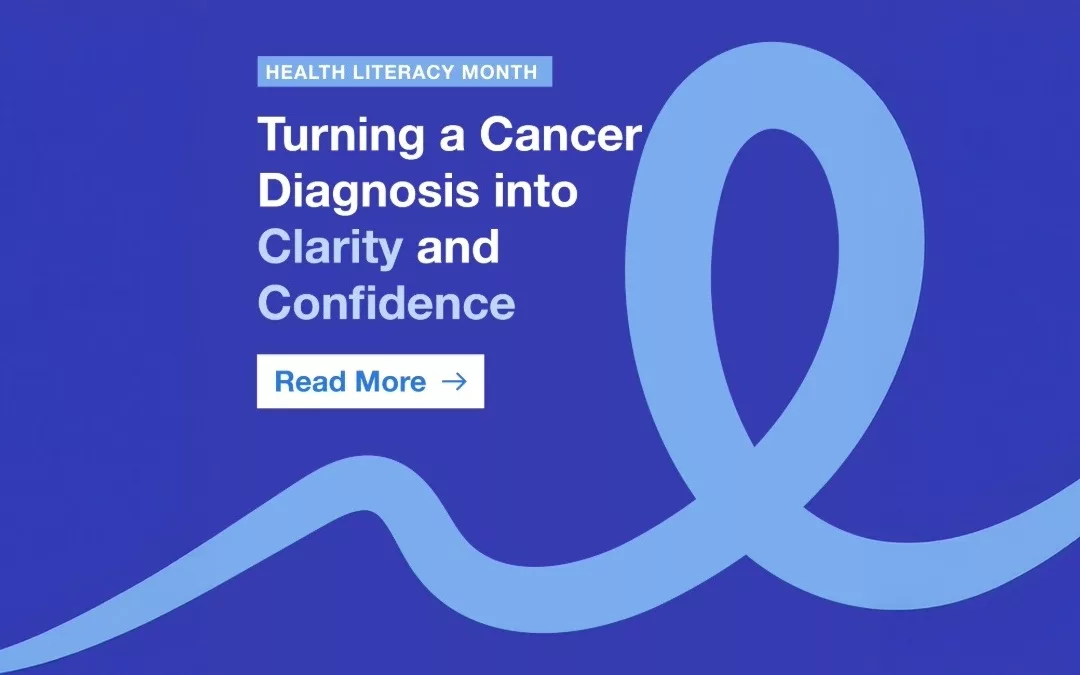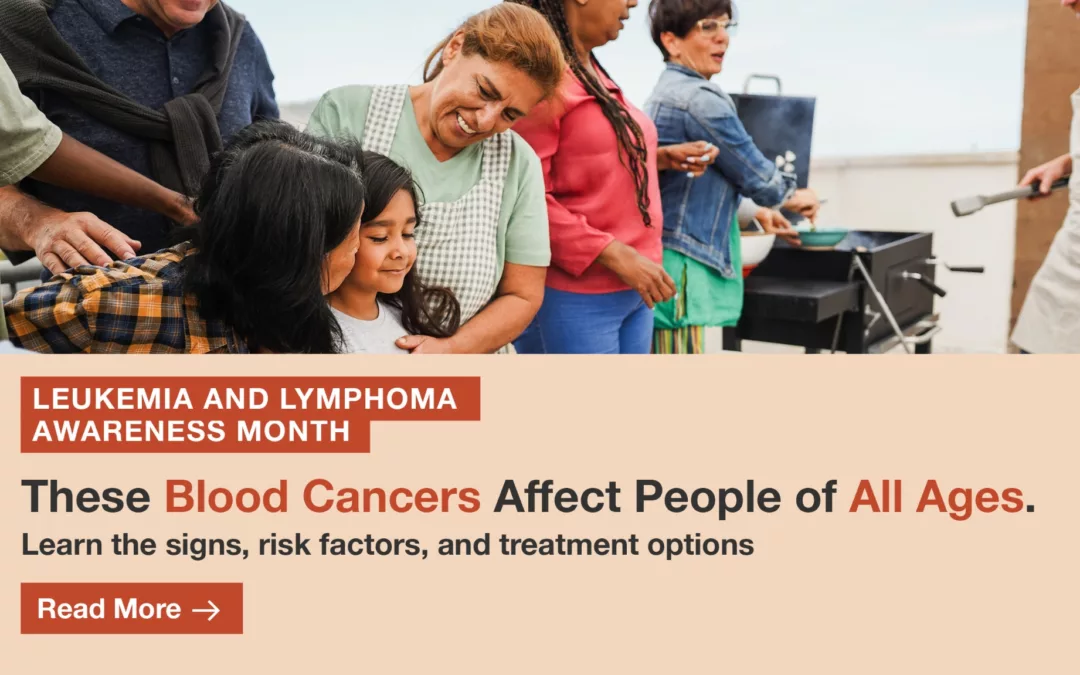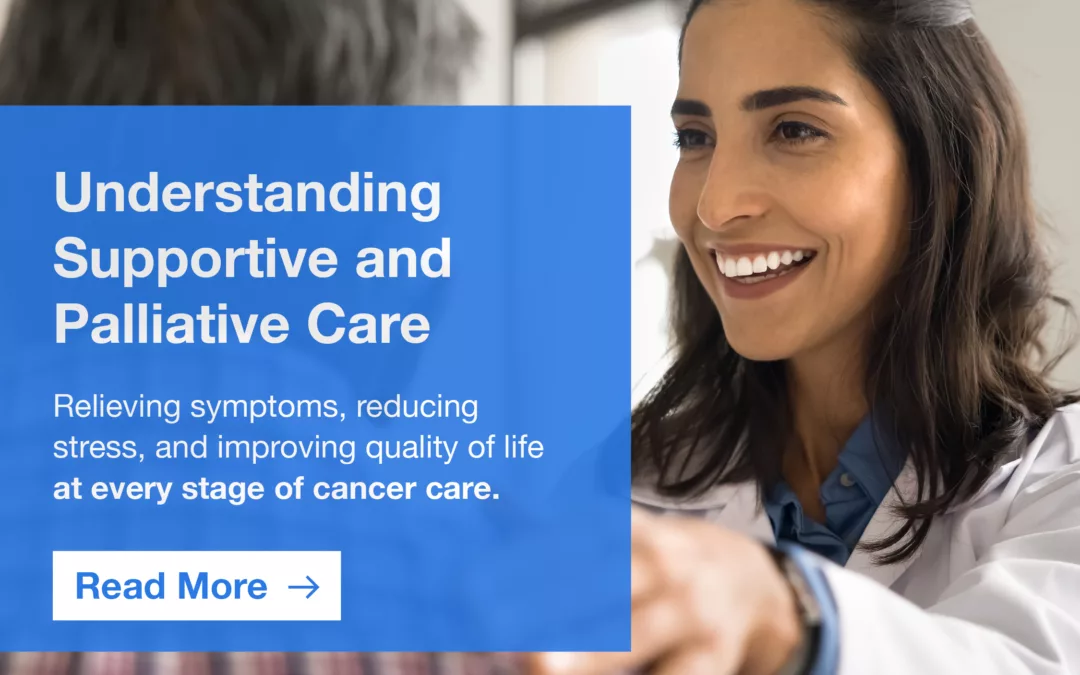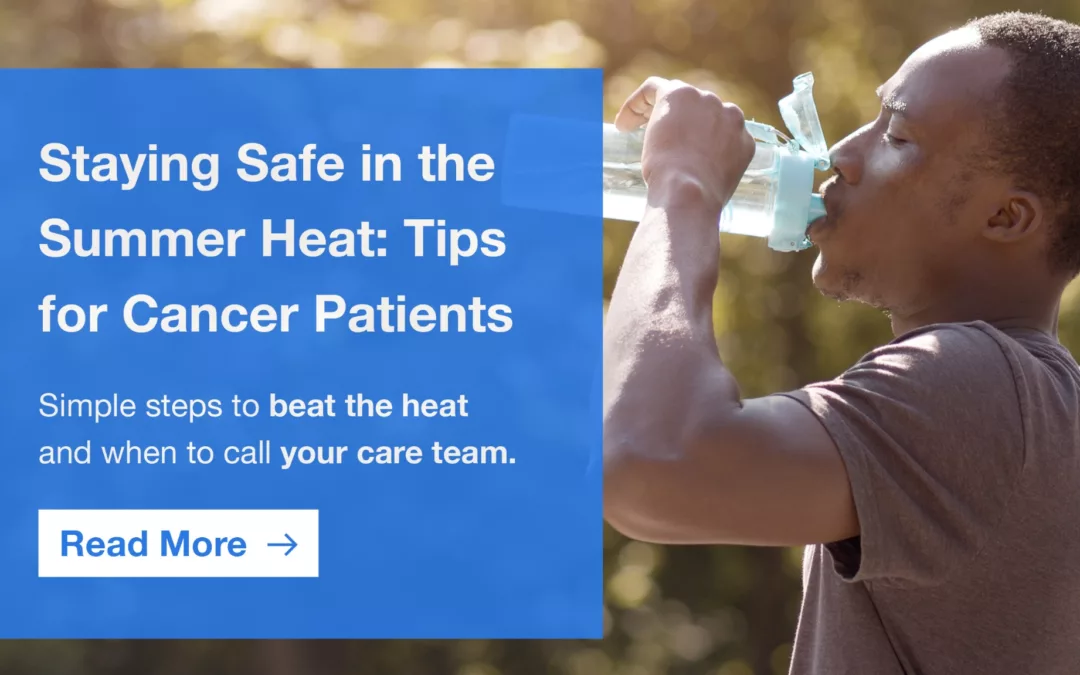
by Jessica Mason | Oct 14, 2025 | Uncategorized
October is National Health Literacy Month, a reminder that quality cancer care isn’t only about treatments, but also about helping patients truly understand their diagnosis and options. Navigating a cancer diagnosis often involves learning unfamiliar medical terms, weighing complex treatment choices, and making difficult decisions under emotional stress. Clear, accessible communication can make the difference between confusion and confidence, empowering patients to take an active role in their care.
The Underestimated Importance of Health Literacy
Health literacy: the ability to access, understand, evaluate, and use healthcare information is critical for anyone facing a cancer diagnosis. Low health literacy has been linked to:
- Poorer quality of life in cancer patients
- Difficulty understanding and processing complex diagnosis and treatment information
- Greater challenges participating in shared decision-making
- Risks of miscommunication leading to errors in treatment adherence
In fact, research shows that patients with higher health literacy survive nearly nine months longer on average than those with lower literacy levels, across various cancers.
Common Barriers to Understanding
When someone hears “You have cancer,” the emotional impact alone can make everything hard to process. Beyond that, barriers include:
- Complex medical jargon and densely written materials
- Reading levels that exceed typical comprehension, many health documents are at a high school senior level or above
- Sociodemographic challenges such as older age, limited education, low income, or limited English proficiency
- Institutional gaps like rushed conversations and unclear handouts
These obstacles can leave patients confused and anxious when they most need clarity.
Why It Matters – Especially in Cancer Care
Patients with low health literacy are less likely to stick to screening schedules, understand treatment plans, or manage follow-up care effectively. Cancer diagnoses are emotionally intense, patients often must weigh surgery, chemotherapy, or radiation with little room for mistakes. Misunderstanding can lead to delayed treatment or poor adherence.
What You Can Do This Health Literacy Month
Whether you’re a patient, caregiver, or provider, here’s how to make communication count:
- Ask questions: repeat them back in your own words to make sure everyone is clear.
- Request plain-language explanations of your diagnosis, treatment options, and side effects.
- Bring a trusted friend or family member to appointments to help take notes, ask questions, or offer support.
For providers: slow down, simplify your language, and confirm understanding through teach back.
Cancer is hard enough. Health literacy shouldn’t make it harder. This October, during Health Literacy Month, we want to help build bridges so that every person facing a cancer diagnosis can feel heard, understood, and empowered to act.
At Lowcountry Oncology Associates, we strive to provide clear, compassionate communication and support. If you or a loved one is navigating a cancer diagnosis, we’re here to walk every step with you.
Call us at 843-790-8280 to learn how we help patients understand and feel confident throughout their care journey.

by Jessica Mason | Sep 9, 2025 | Uncategorized
Leukemia and lymphoma awareness helps drive early detection, better treatment outcomes, and vital support for patients and families. As two of the most common types of blood cancer, both conditions affect the body’s ability to fight infection, but with earlier diagnosis and ongoing advances in treatment, there’s more hope than ever for patients facing these diseases.
What Are Leukemia and Lymphoma?
Leukemia is a cancer of the blood and bone marrow. It typically begins in the cells that would become white blood cells, leading to the production of abnormal cells that crowd out healthy ones. Leukemia is categorized based on how quickly it progresses, either fast-growing (acute) or slow growing (chronic), and by the type of white blood cells it affects. The main types include, but are not limited to:
- Acute lymphoblastic leukemia (ALL): Most common in young children but can also occur in adults.
- Acute myeloid leukemia (AML): A fast-growing leukemia that is more common in adults, though it can also affect children.
- Chronic lymphocytic leukemia (CLL): The most common chronic leukemia in adults. Some people may feel well for years before needing treatment.
- Chronic myeloid leukemia (CML): Primarily affects adults. Symptoms may be mild or absent for a long time before progressing more rapidly.
- Other rare types: These include hairy cell leukemia, myelodysplastic syndromes, and myeloproliferative disorders.
Lymphoma is a cancer of the lymphatic system, which is part of the body’s immune system. It begins in lymphocytes; a type of white blood cell that helps fight infection. There are two main types of lymphoma:
- Hodgkin lymphoma: This type starts in B lymphocytes (B cells) and typically affects lymph nodes in the upper body. It often spreads in an orderly pattern from one node to the next.
- Non-Hodgkin lymphoma (NHL): Also begins in lymphocytes but can develop in lymph tissue throughout the body, including the lymph nodes, spleen, bone marrow, thymus, tonsils, adenoids, and digestive tract. NHL includes many subtypes, ranging from slow growing to more aggressive forms.
Symptoms to Watch For
Signs of leukemia and lymphoma can be subtle or resemble other conditions. Common symptoms include:
- Fatigue or weakness
- Fever or night sweats
- Frequent infections
- Swollen lymph nodes
- Unexplained weight loss
- Easy bruising or bleeding
- Bone or joint pain
If symptoms persist or worsen, it’s important to talk with your healthcare provider.
Who is at Risk?
While anyone can develop blood cancer, certain factors may increase risk:
- Age: leukemia is more common in order adults, though some types affect children
- Gender: lymphoma and leukemia are slightly more common in males
- Family History: a history of blood cancers may raise your risk
- Immune System Disorders: autoimmune diseases or immunosuppressive therapy may be contributing factors
- Exposure to certain chemicals or radiation
- Previous chemotherapy and radiation, smoking (AML)
Understanding your risk factors and staying proactive with your health can lead to earlier diagnosis and more treatment options.
Diagnosis and Treatment
Diagnosis may involve blood tests, bone marrow biopsies, imaging, or lymph node biopsies, depending on the symptoms and suspect type of cancer. Treatment is highly individualized and may include chemotherapy, targeted therapy, immunotherapy, radiation therapy, or bone marrow or stem cell transplant. Our oncology care team will work closely with you to develop a personalized treatment plan based on the type and stage of the patient’s cancer, as well as overall health and treatment goals.

by Jessica Mason | Aug 25, 2025 | Uncategorized
When facing a cancer diagnosis, most people focus on treatments like chemotherapy, surgery, radiation, or immunotherapy. But another essential part of cancer care often goes underrecognized: supportive and palliative care.
These services help manage side effects, ease emotional burdens, and provide personalized support that improves comfort and quality of life. It’s important to understand what supportive and palliative care really mean—and how they can make a meaningful difference throughout the cancer journey.
What’s the Difference Between Supportive and Palliative Care?
- Supportive care includes a wide range of services designed to help patients manage the side effects of cancer and its treatment, cope with emotional challenges, and maintain well-being throughout the course of care.
- Palliative care is a specialized type of supportive care that focuses on relieving symptoms, pain, and stress related to serious illness. It’s appropriate at any stage of cancer, not just end-of-life, and is often provided alongside curative or life-prolonging treatment.
Both aim to improve quality of life for patients and families by addressing physical, emotional, social, and spiritual needs.
Why Supportive and Palliative Care Matter
Cancer doesn’t just affect the body; it impacts every part of life. Treatment can be physically taxing and emotionally overwhelming. Supportive and palliative care helps patients and families navigate these challenges with strength and clarity.
Benefits include:
- Relief from symptoms like fatigue, pain, nausea, anxiety, or shortness of breath
- Emotional support through counseling, social work, or spiritual care
- Guidance on nutrition, activity, and sleep to help patients feel their best
- Support for families and caregivers during treatment and beyond
- Improved communication and decision-making between patients, caregivers, and care teams
What Services Are Included?
Supportive and palliative care services can vary by practice and clinic, but often include:
- Symptom and pain management
- Palliative care consults
- Emotional support and counseling
- Spiritual care
- Advance care planning
- Psychosocial support
In addition to supportive and palliative care, many oncology practices offer a range of patient support services designed to enhance your well-being during and after treatment. These may include survivorship programs, nutrition counseling, social work and financial guidance, caregiver support, transportation assistance, and wellness classes. Together, they support your long-term quality of life and help you feel more confident and supported throughout your care. Ask our care team about the full range of services available—we’re here to help guide you every step of the way.
Who Can Benefit?
The short answer: anyone affected by cancer.
Supportive and palliative care are appropriate whether you’re newly diagnosed, in active treatment, recovering after treatment, or living with advanced cancer. These services are personalized to your needs and can begin at any point in your care, not just when symptoms become overwhelming.
All Parts of Your Care, Connected
Supportive and palliative care involves a coordinated team of experts working alongside your oncology team. This often includes doctors, nurses, social workers, dietitians, therapists, chaplains, and other specialists, all focused on your comfort, clarity, and quality of life.
Supportive and palliative care are not “extras”; they are essential parts of whole-person cancer care. They help ensure that your symptoms are managed, your voice is heard, and your emotional and physical needs are supported every step of the way.
If you or a loved one is navigating cancer, ask your care team about supportive and palliative care services available to you. You deserve care that supports all of you, not just illness.

by Jessica Mason | Aug 15, 2025 | Uncategorized
As summer temperatures peak and humidity lingers, cancer patients face unique challenges in the heat. Treatment and recovery can make it harder for the body to regulate temperature, stay hydrated, and avoid complications like heat exhaustion. With a few simple precautions, patients can stay safe and comfortable—even in the late-summer heat.
Why Cancer Patients Need to Be Extra Cautious in the Heat
Cancer and its treatment, especially chemotherapy, radiation, and some immunotherapies, can make it harder for your body to regulate temperature, stay hydrated, and fight infection. Certain medications may increase your risk of sun sensitivity, fatigue, or even heat stroke. And if your immune system is weakened, crowded summer events may increase your exposure to illness.
Simple Steps to Beat the Heat
- Stay Hydrated: this is especially important, and often more difficult, for cancer patients during the summer months. Both cancer and its treatments can increase your risk of dehydration due to a range of side effects like reduced interest in food and drink, nausea, vomiting, or diarrhea. Instead of waiting until you’re thirsty, try sipping water regularly throughout the day. Avoid caffeine and alcohol, which can dehydrate you further and worsen symptoms.
- Time It Right: if you want to get fresh air and exercise, try to go outside early in the morning or later in the evening when the sun is lower and temperatures are cooler. Avoid peak sun hours between 10 a.m. and 4 p.m.
- Dress for the Weather: choose lightweight, loose-fitting clothing and a wide-brimmed hat. Light colors can help reflect the sun’s rays. Don’t forget sunglasses that offer 100% UV protection to help protect your eyes—chemotherapy and radiation can make them more sensitive.
- Protect Your Skin: cancer treatments can make your skin more fragile or prone to sunburn. Use a broad-spectrum sunscreen with SPF 30 or higher, even on cloudy days, and reapply every two hours, or after sweating or swimming. Shade is your best friend.
- Listen to Your Body: heat-related illness can come on Symptoms like dizziness, muscle cramps or weakness, nausea, rapid heartbeat, or confusion could signal dehydration or heat exhaustion. If you experience any of these, move to a cool place and contact your care team right away.
- Keep it Cool Indoors: if you don’t have air conditioning at home, find public places with climate control, such as libraries, shopping centers, or designated cooling centers in your area.
- Maintain a Summer-Ready Emergency Kit: make sure you have access to water, snacks, any necessary medications, a charged phone, and contact information for your oncology care team.
When to Call Your Care Team
Let your doctor know if you:
- Experience any signs of dehydration or heat illness
- Have difficulty staying cool
- Notice changes in your skin (rashes, sunburn, peeling)
- Have persistent nausea, dizziness, or fatigue after being in the heat
Our care team can offer you or a loved one personalized advice tailored to your treatment and symptoms, and help you adjust your plans as needed to stay safe.
Enjoying Summer Safely
Even in the final stretch of summer, connection and joy are still possible with a little extra care. With the right precautions, cancer patients can safely enjoy the season’s final weeks. By staying aware of the risks and making smart choices, cancer patients can enjoy the sunshine without putting their health at risk.
For more guidance or questions about how your treatment may affect your end of summer plans, don’t hesitate to contact our team at any time.





